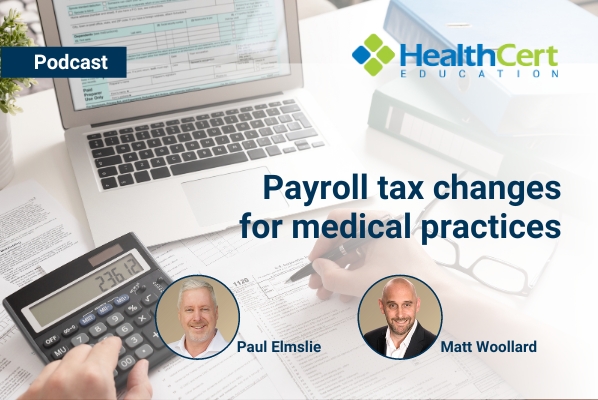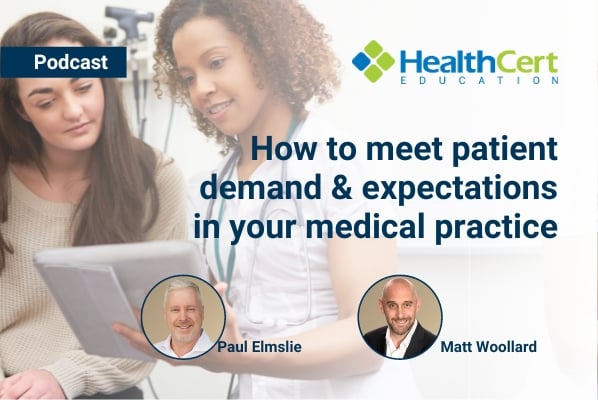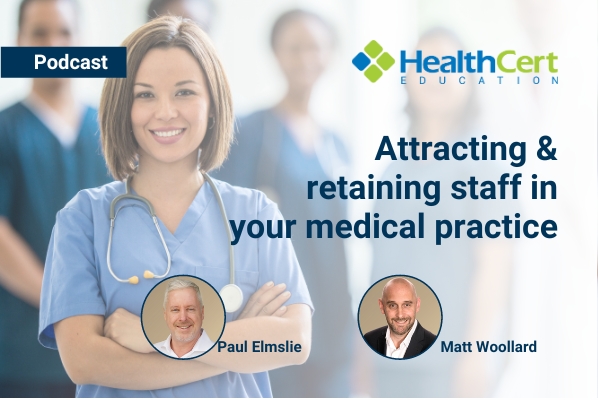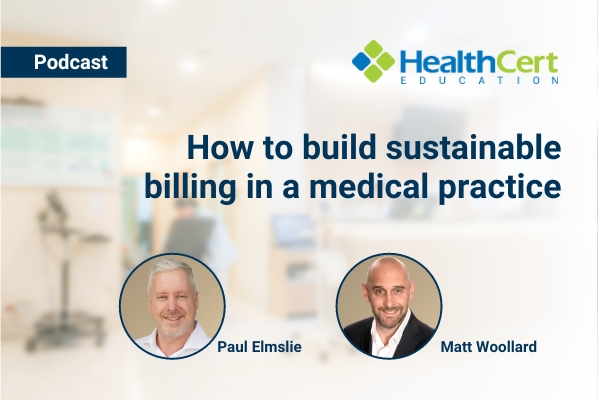Payroll tax changes for medical practices
Podcast: Paul Elmslie & Matt Woollard discuss changes to medical practice payroll tax & share tips to possibly safeguard your practice.

HealthCert Education
Are you prepared to navigate the upcoming changes to payroll tax for medical practices? In this latest podcast, Paul Elmslie (Founder & CEO, HealthCert Education and National Skin Cancer Centres) and Matt Woollard (COO, National Skin Cancer Centres) discuss the proposed changes and share a few tips to possibly safeguard your practice.
Listen to the full podcast now:
In this episode of HealthCert's GP Insights podcast, Paul Elmslie and Matt Woollard talk about the upcoming changes to payroll tax for medical practices and discuss how they are attempting to weather these changes. Paul and Matt draw on their own experiences from having owned and operated 40+ medical clinics in Australia over the past few decades.
The various State Revenue Offices are taking a view that doctors are now seen as employees rather than sub-contractors, which would mean that the medical practices in which they work must pay payroll tax. The percentage varies between states, but in many states this means an additional cost of 5 per cent. The State Revenue Office can back-date this tax by five years and apply penalties for unpaid taxes. This presents a significant risk to the general practice industry.
In the podcast, Paul and Matt talk about defining the relationship between the medical practice and the doctor, and the body of evidence supporting that doctors are sub-contractors rather than employees.
Matt discusses some of the strategies he has put in place for the National Skin Cancer Centres to put the clinics in an optimal position to potentially weather changes to payroll tax regulations. For example:
- The doctor bills the patient and provides the medical practice with a service fee once per fortnight.
- The medical practice never includes the doctors' income as an expense on financial statements.
- Agreements are in place that the doctor pays the medical practice for the use of their facilities.
- The doctors set their own fees and close off their appointment books when they don't want to see patients (in lieu of annual leave).
- The doctors have complete autonomy to bill, consult and treat patients however they choose.

 1800 867 1390
1800 867 1390





